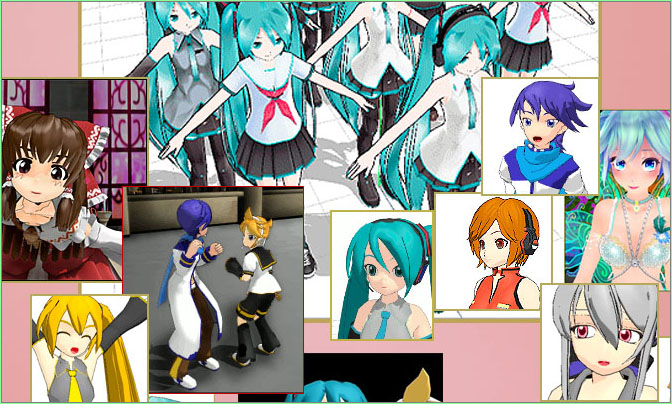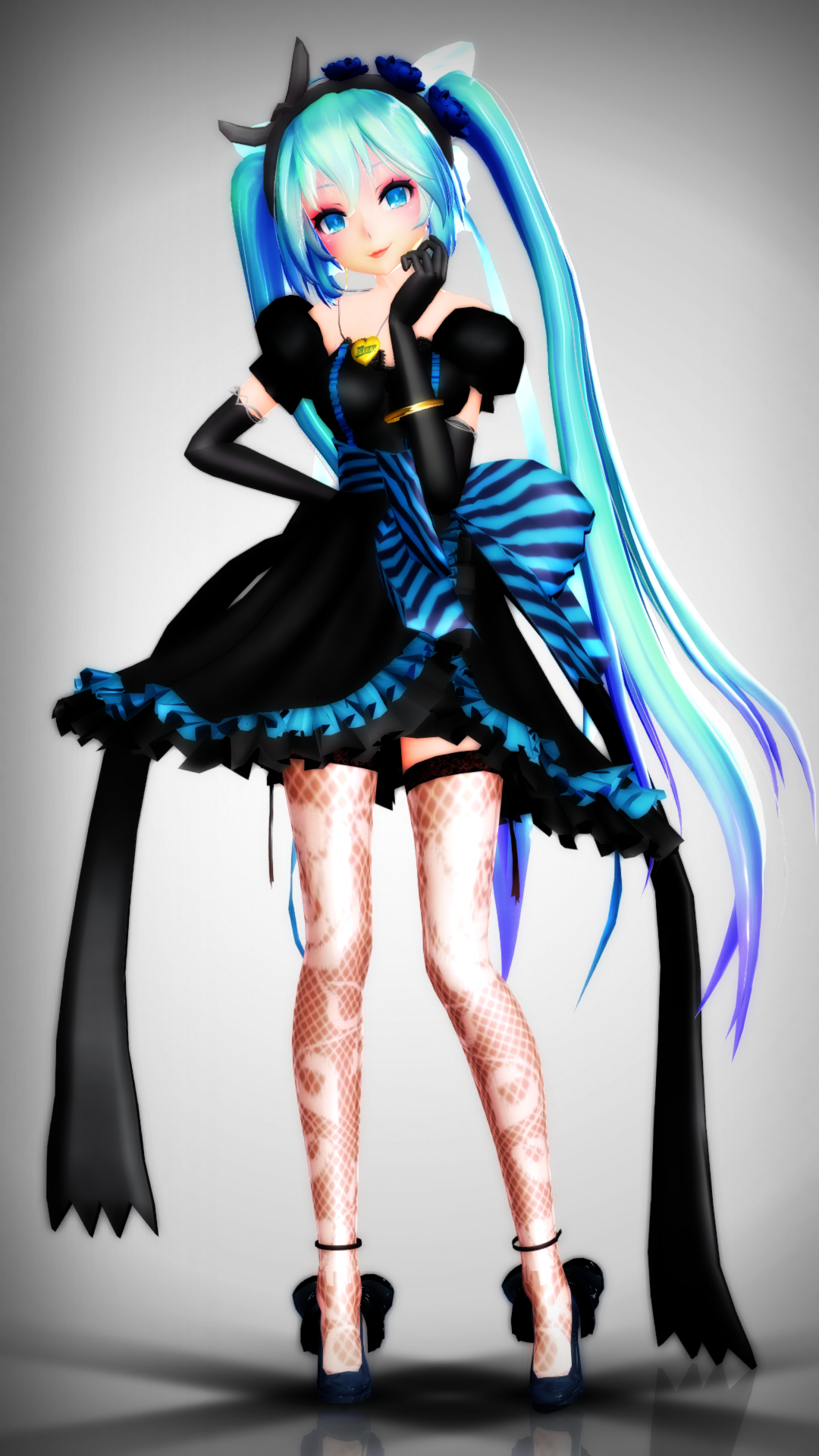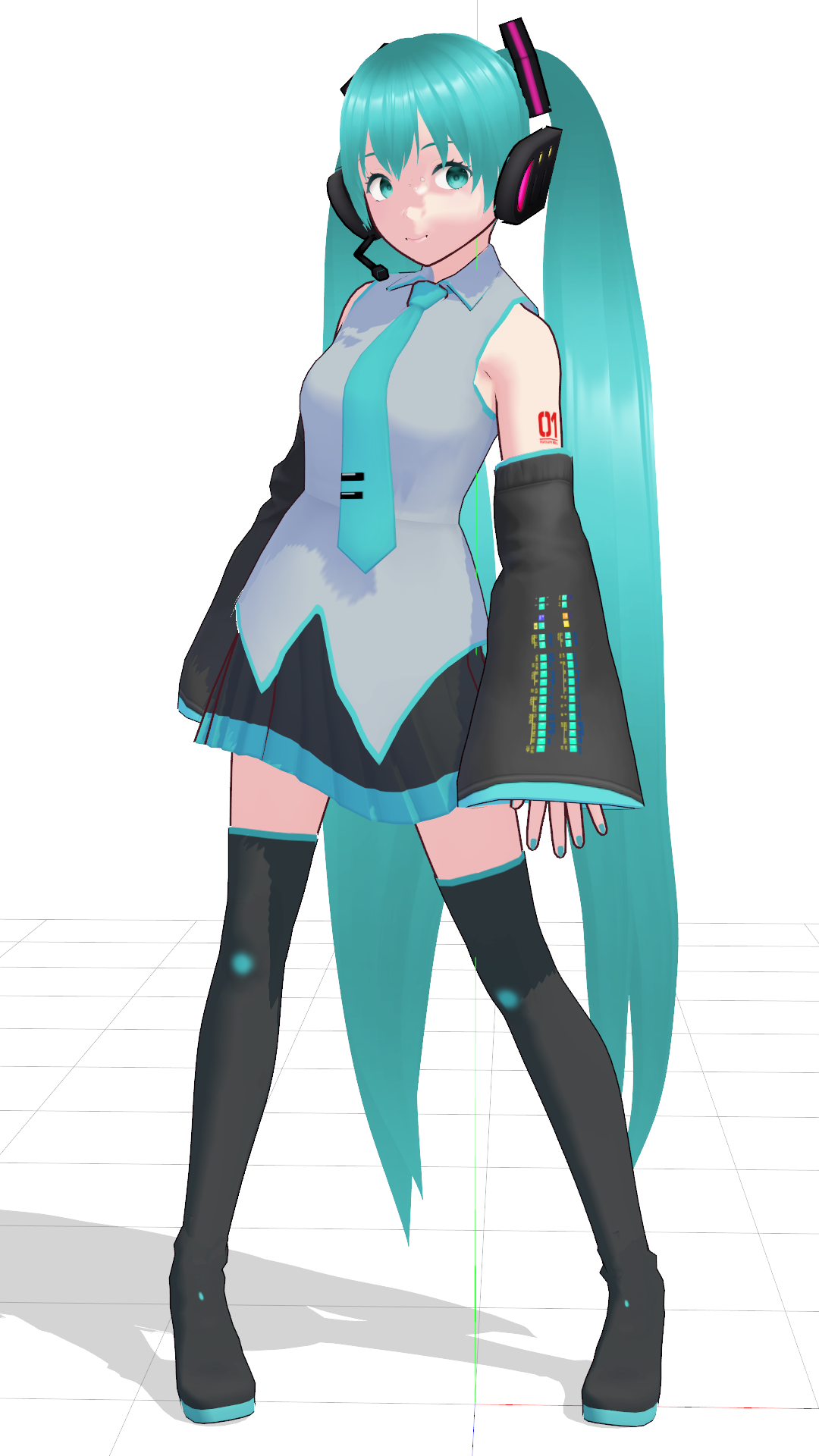MMD R18- Crafting Detailed Digital Scenes
Creating digital scenes with MikuMikuDance, or MMD as many folks call it, lets people bring all sorts of imaginative ideas to life. This software is a favorite for folks who enjoy making animated pieces, whether for fun, telling a story, or just sharing something cool they thought up. You know, it gives you a way to really get those characters moving and expressing things, which is pretty neat.
So, when you think about making these pieces, especially ones that might be a bit more grown-up, you want things to look just right. This often means paying close attention to every little piece, from how a character's face looks to the way light falls on a scene. It’s all about getting those small details to come together for a bigger picture, and that takes some specific tools, you know?
For those interested in making more mature content, often referred to as MMD R18, the core process still revolves around the same tools and techniques that give you fine control over your digital figures and their surroundings. It’s really about using the software to its fullest to bring a particular kind of vision into being, which is pretty much the same for any MMD project, just with a different end goal, you might say.
- Exploring The Dynamic Duo Of Keira Knightley And Natalie Portman
- Unveiling The Life And Career Of Traylor Howard
- Unlocking The Mysteries Of The 15 June Zodiac
- Unveiling The Enigma Vincent Price Height And More
- Exploring The Timeless Elegance Of Walk On By By Dionne Warwick
Table of Contents
- How Do You Get Precise Facial Movements for MMD R18?
- Making MMD R18 Creations in Blender- What's the Deal?
- MMD R18- Where Can You Find Community Tools?
- What About Bringing MMD R18 to Your Browser?
- Blender Addons for MMD R18- A Closer Look
- Working with MMD R18 Scenes and Materials
- Getting Started with Ray-MMD for MMD R18
- The Basics of Ray-MMD for MMD R18 Visuals
How Do You Get Precise Facial Movements for MMD R18?
When you're working with MMD software, you'll find there’s a spot just for handling the way a character’s face looks. This includes things like their eyes and other bits of their face. It’s a pretty handy feature, actually, because you can just move a little control back and forth to change expressions. This kind of fine-tuning is really important for getting the right feeling across in your scenes, especially for MMD R18 content where expressions can carry a lot of meaning. You want to make sure your figures are showing exactly what you want them to, whether it's a subtle look or something more obvious.
This ability to tweak things with a simple slide is quite a benefit for anyone putting together digital stories. It lets you shape a character’s mood or reaction without too much fuss. Think about it: a slight adjustment to an eyelid or the curve of a lip can completely change the tone of a moment. This level of control helps artists make their digital figures feel more alive and expressive, which is a big part of making any piece of animation truly connect with people, you know?
However, if you happen to be using Blender, which is a different kind of 3D program, you might run into a bit of a puzzle. Many folks who are used to MMD’s straightforward facial controls often wonder how or where to find similar options in Blender. It’s a common question, actually. Blender works in its own way, and finding those specific facial adjustment tools can feel a little bit like looking for a needle in a haystack if you’re not familiar with its setup. This is where other tools often come into play to help bridge that gap for MMD R18 creators.
- Where Is Anthony Geary Now A Journey Through His Life And Career
- Unwrapping The Magic The Allure Of Reeses Peanut Butter Cups Advertisement
- Exploring The Magic Of The James Taylor Tour
- Unveiling The Life And Legacy Of Clifton Powell Jr
- Unraveling The Professional Lives Of Taylor Swifts Parents
Making MMD R18 Creations in Blender- What's the Deal?
It’s a pretty common thing for people to want to use Blender for their MMD creations, even for MMD R18 pieces, because Blender offers a whole different set of creative possibilities. You see, while MMD is great for motions and bringing models to life quickly, Blender gives you more power over things like lighting, textures, and really detailed scene building. So, getting your MMD figures and their movements into Blender opens up a lot of new doors for visual quality and complexity, which can be quite appealing for those who want to push their projects further.
One of the ways people bring MMD content into Blender is through something called "MMD tools." This is a special piece of software that helps the two programs talk to each other. It’s pretty clever, really. This tool lets you bring in the figures and their dance moves from MMD right into Blender, so you can then use Blender’s advanced features to make the scene look even better. It’s a bit like having the best of both worlds, giving you the animation ease of MMD with the visual polish of Blender, which is rather useful.
There have been some changes with how these tools work, too. For instance, the MMD tools 4.x extension, which was a certain way of adding this capability, got changed to be an "addon" instead. This might sound like a small detail, but it affects how you install and use it within Blender. These kinds of updates happen because the people who make these tools are always working to make them better and easier for everyone to use, which is good news for anyone working on MMD R18 or any other type of MMD project.
MMD R18- Where Can You Find Community Tools?
When you’re working on MMD projects, especially something like MMD R18, you’ll often find that the community around MMD is a huge help. A lot of the really useful bits of software, like those MMD tools for Blender, are put together by people who just love MMD and want to make it better for everyone. It’s a very collaborative effort, you know? People share their creations and their fixes, and that’s how these tools get improved over time. It’s quite a testament to the passion of the MMD community, really.
For example, if you wanted to help make the MMD tools addon even better, or just keep up with its progress, you could actually get involved. There’s a place called GitHub where people who write computer code share their work. You can contribute to the development of things like the ulyssas/mmd_tools_addon_4.2 there by simply creating an account. It’s a way for anyone with an interest to see how these tools are built and even offer their own ideas or help fix things. This kind of open sharing helps everyone, which is pretty cool.
This community-driven approach means that if you run into a snag or wish a tool did something a little differently, there’s often a way to find a solution or even suggest an improvement. It keeps the tools fresh and responsive to what users actually need. So, if you’re trying to make something specific for MMD R18, and you’re hitting a wall, checking out these community spots can often give you the answers or the new bits of software you need, which is a rather handy thing to remember.
What About Bringing MMD R18 to Your Browser?
It’s pretty interesting to think about how MMD creations, even MMD R18 pieces, can be shared and viewed. For a while now, people have been looking for ways to make MMD content more accessible, perhaps even letting you play MMD right in your web browser. This would be a big step for sharing, because it means someone wouldn’t need to have the MMD software installed on their computer to see what you’ve made. They could just open a web page, and there it would be, which is a very neat idea.
The idea of playing MMD in the browser is about making things easier for viewers. Instead of having to download files and special programs, they could just click a link and watch. This sort of accessibility could really open up MMD content to a wider audience, making it simpler for people to share their animated pieces with friends or with the world. It’s a way of breaking down some of those technical barriers that can sometimes get in the way of sharing creative work, you know?
While the full capabilities of desktop MMD might not be completely available in a browser version, even a simpler player could be a really useful thing. It would let creators show off quick clips or previews of their MMD R18 projects without requiring viewers to jump through too many hoops. This kind of innovation is always happening in the digital creative space, as people look for new and better ways to present their work, which is pretty much always a good thing.
Blender Addons for MMD R18- A Closer Look
As we talked about a bit before, MMD tools is a specific piece of software that works with Blender. Its main job is to help you bring in character figures and their movements from MikuMikuDance into the Blender program. This is a really important step for many people who want to combine the ease of MMD’s animation features with the more detailed rendering and scene setup options that Blender offers. It’s a pretty essential bridge for many creators, especially those working on more involved MMD R18 projects where visual quality is a big consideration.
Think of it this way: MMD is fantastic for getting your characters to dance and move in specific ways, but Blender is where you can make them look truly polished. You can add very realistic lighting, detailed textures, and create complex backgrounds that might be harder to do directly in MMD. So, MMD tools lets you take all that movement you’ve created and put it into an environment where you can really make it shine. It’s about giving you more artistic control over the final look of your piece, which is very helpful.
This addon helps with both the figures themselves and the way they move. It makes sure that when you bring them over, they keep their shapes and their animated actions. Without something like MMD tools, trying to get MMD content into Blender would be a much more difficult task, perhaps even impossible for many. So, it really does act as a key piece of software for anyone who wants to use both programs in their creative process, which is quite a common approach for making detailed MMD R18 content.
Working with MMD R18 Scenes and Materials
Beyond just bringing figures and their movements into Blender, there are other tools that help you adjust the whole scene. For instance, there’s an addon called Mmd_uuunyaa_tools. This one is made to work with MMD tools, and it helps you tweak the scenes, the character figures, and the materials they are made of. This means you can really get into the finer points of how everything looks and feels in your MMD R18 creations, which is pretty important for setting the right mood or atmosphere.
When you’re building a scene, you want everything to fit together just right. Mmd_uuunyaa_tools lets you play around with things like the textures on a character’s clothes or skin, or how certain objects in the background reflect light. It’s about giving you the ability to make those small but impactful changes that can really make a scene pop. This level of detail is often what separates a good digital piece from a truly great one, you know?
So, these two addons, MMD tools and Mmd_uuunyaa_tools, really work together to give you a complete package for bringing MMD content into Blender and then making it look exactly how you want. They help you get everything from the basic movements to the most subtle visual details just right. This kind of collaborative toolset is a big win for creators, as it means fewer headaches and more time spent on the creative parts of making MMD R18 scenes, which is always a plus.
Getting Started with Ray-MMD for MMD R18
If you're looking to make your MMD creations, including MMD R18 pieces, look truly stunning, you might hear about something called Ray-MMD. This is a system that helps you make your digital scenes look incredibly realistic, with beautiful lighting and shadows. It’s a step up in terms of visual quality, but it also means there’s a bit more to learn. The good news is, there are helpful guides out there to get you started, even if you’ve never touched Ray-MMD before, which is pretty convenient.
One of these guides mentions that you don’t need to know anything about Ray-MMD beforehand to get going. That’s a really welcoming thought, isn’t it? It means anyone can pick it up and start making their pictures look better. The guide is set up to show you the steps for making a picture you like really shine using this system. It takes you through the whole process, so you’re not left guessing, which is very helpful for new users.
The goal of such a guide is to teach you the basic things you need to know about putting Ray-MMD on your computer and then using it. It covers the fundamentals, so you can get a good grasp of how it works. This is important because while the results can be amazing, there are a few steps involved in setting it up correctly. Having a clear path to follow makes learning much less of a chore, which is always a good thing when picking up new software for your MMD R18 projects.
The Basics of Ray-MMD for MMD R18 Visuals
Continuing on from what we just talked about, these guides are designed to give you a solid foundation in using Ray-MMD. They really focus on the basics, making sure you get a good handle on how to install the system and how to start using it for your projects. This knowledge is key to making your MMD R18 images look their very best, giving them that polished, almost lifelike appearance that Ray-MMD is known for. It’s all about getting those first few steps right, you know?
The idea is that once you understand these basic things, you’ll be able to make your favorite pictures look much better. Ray-MMD can add depth and realism that standard MMD might not offer on its own. It handles light in a much more sophisticated way, making shadows softer and reflections more accurate. This attention to light and shadow can really make a difference in how compelling your MMD R18 scenes appear to others, which is a big part of creating engaging visuals.
So, these guides are all about giving you the foundational pieces of information you need. They aim to equip you with the initial knowledge to begin rendering your own pictures with Ray-MMD. Having these building blocks in place means you can then experiment and push your visuals even further as you get more comfortable with the system. It’s a good way to step up the visual quality of your MMD R18 content without feeling completely lost, which is pretty much what any creator wants.
- Discovering The Unique Appeal Of Killian Scotts Eyebrow
- Unraveling The Mystery Why Did The Derricos Divorce
- Exploring The Journey Of Jonathan Penner On Survivor
- Simon Cowells Journey As A Father Understanding His Sons Disability
- Unveiling The Story Of Karen Gillans Partner Love And Life Beyond The Screen

Learn MikuMikuDance - The MMD Instructions you always wanted!

MMD TDA:Cute Miku Download!! by AmaneHatsura on DeviantArt

Hatsune Miku MMD MODEL DL by YinP on DeviantArt